13th and 14th Century Russian Arms and Armor
Stabbing weapons - kolyushchyeye oruzhiye
konchar - 14th - sword.
kop'yo - spear - 13th, 14th -
rogatina - 13th, 14th
sablya/sabel - saber - 10th-14th, and later
sovna - spear or pike - see chopping weapons.
chekan ? - date? - kisten'i -date? - flails, were made of various metal weights attached to a
handle by a long chain or leather thong up to 50 cm long (19 inches). Their
use required considerable skill, but they were widely used. (Sloan)
klevets ? - military hammer/pick. (Sloan)
palitsa - a large cudgel with iron spikes made from big nails, also called
an oslop, was an ancient weapon.
shestoper - 13th-17th - mace with six equally-spaced vertical vanes made of
six metal plates coming out of a ball. Examples are known from the 13th
century, but it was used mostly in the 15th-17th centuries and, like the
bulava, could be a mark of military rank. (Sloan and Nicolle 1999?)
sovna - spear or pike - date? - one of a variety of pikes, it had a curved
blade with one sharp edge, slightly bent and attached at the end of a long
pole. (Sloan)
topor - 13th, 14th - axe -
drota - 14th - a drotik is a javelin. I can only suppose that "drota" is a
related term.
kop'yo - spear, see stabbing weapons
luk and strela - bow & arrow - 13th, 14th -
samostrel - crossbow or arbalest - 12th-14th
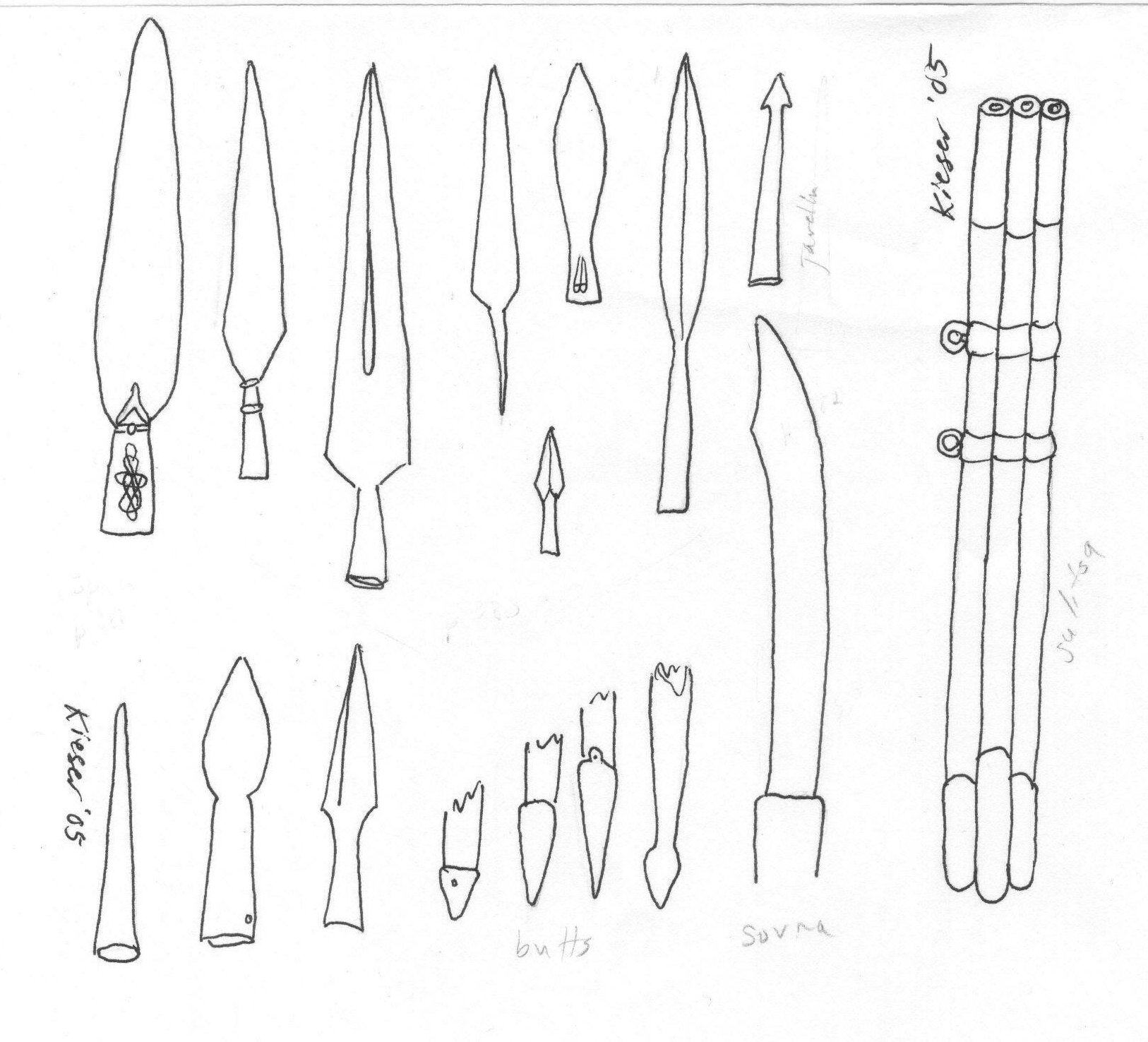
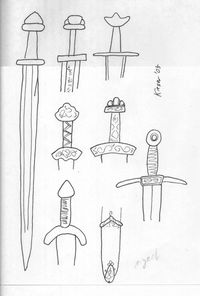 myech - sword - 9-17th
myech - sword - 9-17th
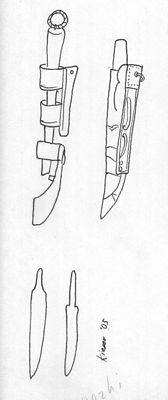 nozh - knife - 13th, 14th - Many forms fit under the category of nozh.
nozh - knife - 13th, 14th - Many forms fit under the category of nozh.
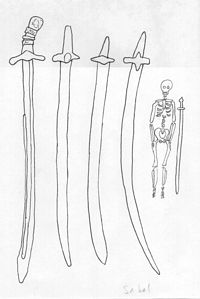
Striking weapons - udarnoye oruzhiye
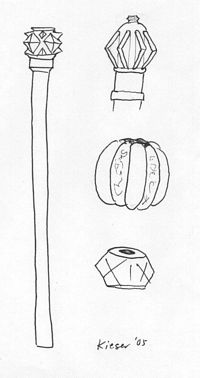 bulava - 13th and later - mace - carried as a mark of the rank of high officers. It
was a short staff with a massive multi-faceted head on one end.
bulava - 13th and later - mace - carried as a mark of the rank of high officers. It
was a short staff with a massive multi-faceted head on one end.
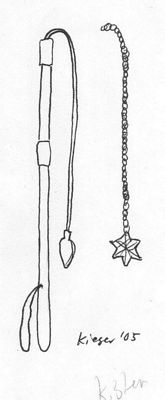
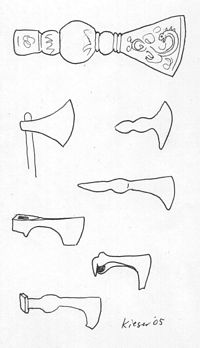 Chopping weapons - ruyashchyeye oruzhiye
Chopping weapons - ruyashchyeye oruzhiye
Launched weapons - metatel'noye oruzhiye
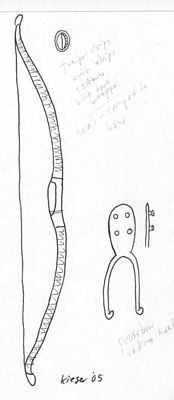
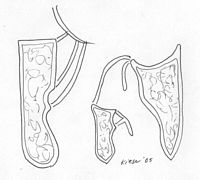 saadak/saadek - the full set of archery equipment, including the bow, bow case,
quiver and arrows.
saadak/saadek - the full set of archery equipment, including the bow, bow case,
quiver and arrows.
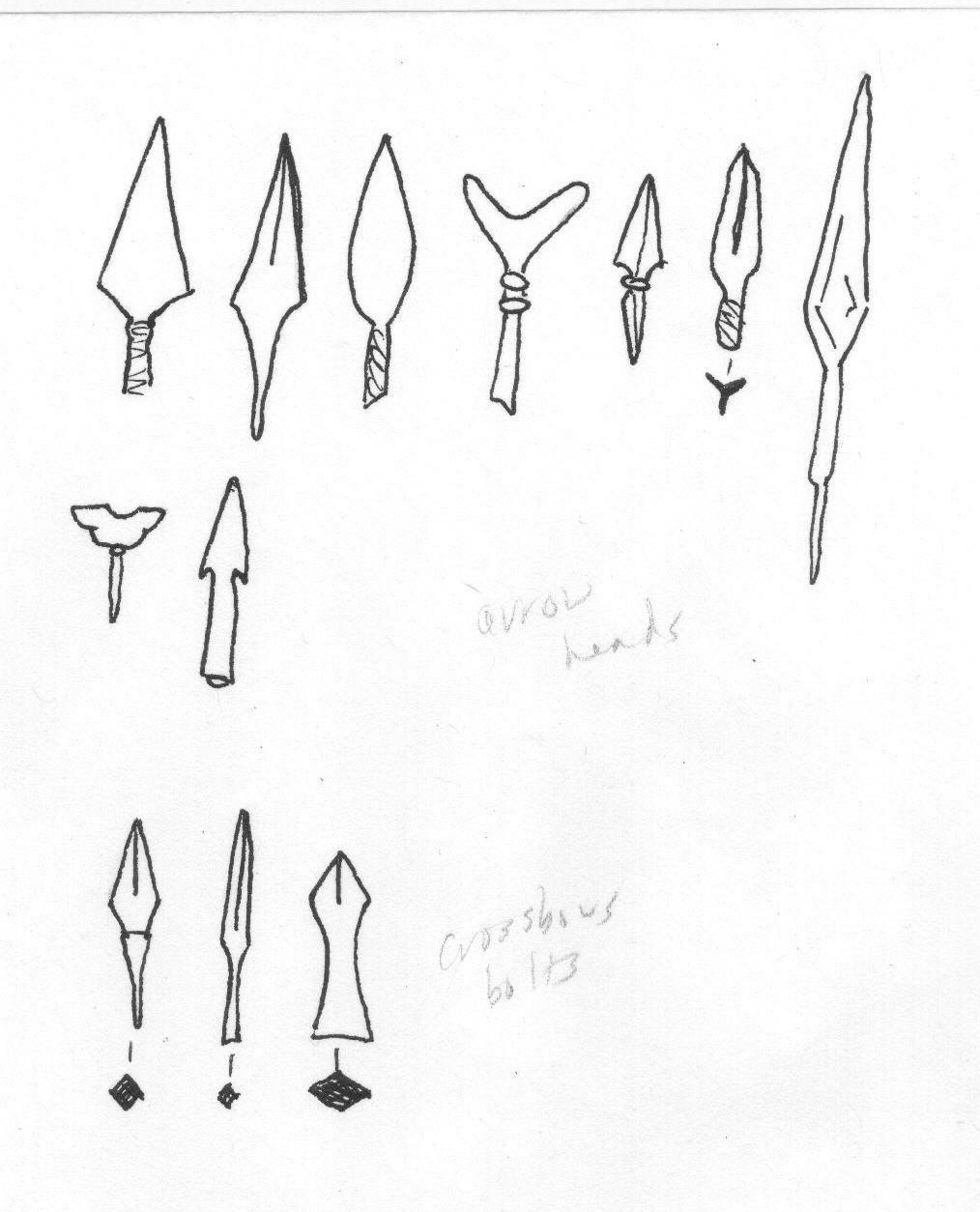 sulitsa ? - javelin, spear - dates? -
sulitsa ? - javelin, spear - dates? -
Return to Main Armor Page
Go on to Defensive Armor.
